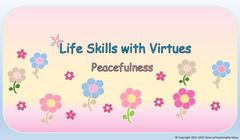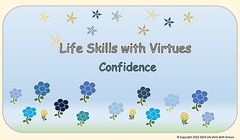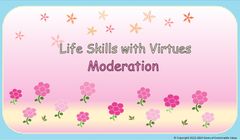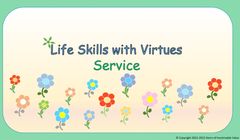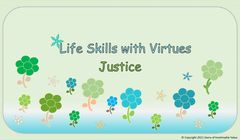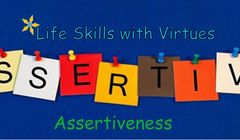The kinesthetic learner: strengths, strategies, learning activities
Got a hands-on kinesthetic learner in your house? Here are simple strategies for playing to their strengths and turning action into education.
One second they’re tapping their foot against the floor, the next, they’re juggling with the socks you just paired, and then they’re building a fort with the living room throw blankets. Kinesthetic learners are easy to spot because they learn by doing.
The idea of learning styles has become more fluid over the past decade. “Styles” are now viewed as “preferences.” But it remains true that tailoring your kids’ educational experiences to their dominant learning processes is likely to excite and engage them.
If you think you’ve got a kinesthetic learner in your household, here are some ideas to turn all that action into education.
What is a kinesthetic learner?
Kinesthetic learners solve problems and process information using real-life—they love doing, especially using body movement. It’s similar to tactile learning, except tactile learners tend to be slightly less physically active and more focused on experiences and touch. Both kinesthetic and tactile learners respond well to experiential learning and nontraditional schedule structures.
Strengths of kinesthetic learners
Kinesthetic learners tend to…
Have excellent hand-eye coordination and agility
Easily remember how to do tasks a second time after doing them once
Have great timing
Be enthusiastic and boisterous
Enjoy playing games with other
Strategies for supporting kinesthetic learners
Kinesthetic learners thrive when given structured physical activities with built-in breaks and lots of movement. They're often misunderstood as having attention disorders or lacking focus, but they just need a personalized approach to learning. Try the following to engage them with schoolwork:
Take them outside and throw a ball around. Or take a walk while reviewing vocabulary or other repetitive material.
Provide a stress ball or fidget spinner for your kids to hold while they read or sit at a table doing homework.
Keep scratch paper around for them to doodle on while they listen.
Don’t react negatively if they’re fidgeting, switching positions, or swinging their legs and tapping their feet—it’s part of their process.
Create a study space with different shapes, textures, and environments. For example, you could provide a hard chair, a beanbag, and a floor mat.
Break the day up into shorter chunks and move quickly from one activity to the next.
Explore Outschool’s live online classes for kinesthetic learners
If you have a kid who is ready to do or make something, we've got a class for that.
Your kids can get creative with virtual arts & crafts classes, learn Anime, design, animation, 3D modeling, fashion, painting, join an art club, and more.
Coding and tech classes for kids, your kids can learn to code, design & build video games, take a class on computers, or learn about the internet.
Online music classes are a convenient and affordable way to learn how to play piano, guitar, violin, and cello. Or singing, music production, music theory, and more.
Your kids can also explore STEM classes, take a gaming course, check out options for Neurodiverse kids, build their life skills, or get moving with a fitness class.
How to engage your kinesthetic learner at home
There are several strategies you can use to help your kinesthetic learner stay on task and thrive in their educational experiences.
Show them how to do tasks around the house while you’re explaining them and requesting that they do them.
Engage in role-play activities to help them better understand emotions, historical events, or stories.
Play games like catch, pickup basketball, Jenga, Twister, Dance Dance Revolution, tag, hide and seek, or sardines.
Visit nearby parks and playgrounds frequently.
Cook with them—putting them to work chopping vegetables or mixing ingredients for family meals.
Ask them to help you fold laundry, vacuum, or do yard work.
Encourage pretend play, dance, yoga, and other physical forms of exercise and relaxation.
Help them engage in imaginary play or put on a performance.
Visit the beach or a sandbox.
Go on nature walks
Buy blocks, puzzles, tumble mats, and balls for them to play with.
Designate a space in your home where tumbling, kicking, jumping, and spinning are all okay—no breakable items, no worries.
Additional learning styles
If these examples don't sound quite right, your child might have other learning preferences:
Visual learner: Learns best via sight, including graphics, charts, and pictures.
Auditory learner: Learns best via conversation and asking questions.
Reading and writing learner: Learns best via the written word.
Our goal at Outschool is to be a place where kids can learn on their terms. We believe learning is best when kids are excited about it. Spark your child's creativity with one of our classes, there's something for every interest, and the average cost is only $15.
Editor's note: this blog was originally published in July 2020 and was updated in September 2022.

Topics Related to Arts & Crafts
Similar Arts & Crafts articles
Arts & Crafts classes

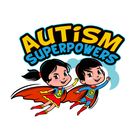
1-on-1 Tutoring
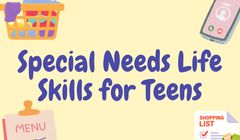

1-on-1 Tutoring
